Exit Sandman

Today, the baseball-writer in me posts...
Tragedy struck yesterday when Mariano Rivera, unquestionably the greatest closer in the history of professional baseball, tore the anterior cruciate ligament in his right knee while chasing a fly ball during batting practice before the Yankees’ game against the Royals. As he ran towards centerfield, the 42 year-old pitcher’s knee buckled and he crashed into the wall, falling onto the warning track dirt, clutching his right knee as he grimaced in pain.
This freak-accident for lack of a better term, most likely ended the career of a first-ballot hall of famer who many (myself included) feel privileged to watch. To date Rivera still has the career record for saves with 608 and many believed that this year was to be his farewell season. Now it appears that his epic story has abruptly come to an end, caused by a simple misstep while shagging balls in the outfield.
Back in 2004 I submitted a short piece on “The Sandman” for a publication by the Fellowship of Christian Athletes. It was later reprinted in Baseball-Almanac and has been quoted in a number of publications since. Titled "A Man With A Message" the gist of the article revolved around Rivera’s religious faith:
Mariano Rivera, the New York Yankees’ top relief pitcher, is arguably the most effective closer in postseason baseball history, recording final outs in three Yankee world title seasons (1998, 1999 and 2000). He also owns the Major League record for most postseason saves with twenty-five, as well as most World Series saves with eight. Rivera also established the longest scoreless innings streak in postseason play with thirty-three innings pitched and was named as the World Series MVP in 1999 and the Most Valuable Player of the American League Championship Series in 2003. He currently leads the Yankees as the club’s all-time saves leader with two hundred eighty-three and boasts an incredible Earned Run Average (runs given up by a pitcher per nine innings pitched) below 1.00 in postseason play.
With such a tremendous gift it is no wonder that Rivera is a deeply religious man who can often be seen reading the Bible in the Yankees’ clubhouse before and after games. He once joked in an interview that he thought “the Good Lord was a Yankee.” Active in the Christian community, Rivera often lends his time, talent and testimonies to numerous religious organizations that are both sports and non-sports related. Not long ago, he financed the construction of a church in his native Panama City and announced his intention to become an evangelical minister at the conclusion of his baseball career. If he retires after the 2007 season, Mariano will be eligible for induction into the Baseball Hall of Fame in 2012. Although Cooperstown has been historically hesitant to embrace relievers, the consensus of most experts is that Rivera will have little trouble being elected, most likely on his first attempt.
During an interview with Sports Spectrum Magazine, a leading Christian-based sports publication, Rivera spoke about adversity and how it led him to faith. “Every time I was going through a hard time, somebody was there to help. It’s not too often when you play in the minor leagues that a coach will tell you he will take care of your son while you stay with your wife at the hospital. My pitching coach did that, and one lady from Panama-I never knew her (before)-offered to stay with my wife while I was playing. Even though I had nobody here, I was never alone. That made me accept Jesus as my Savior. I knew it wasn’t a coincidence. It was the Lord putting someone there for me.”
In a sports world that is now dominated by media-hype and big endorsement contracts, players like Rivera and their traditional values provide a glimmer of hope that there are still positive role models worthy of our children’s attention. Mariano is well aware of the responsibilities that go with being a professional athlete and is constantly working to promote Christian ministries that focus on kids. Last season, he appeared courtesy of Athletes in Action at two Staten Island churches sharing his faith and his desire to be a worthy “hero”. A few weeks later over one hundred and seventy five fans participating in the Operation Blessing Back to School Challenge watched him beat the Toronto Blue Jays in extra innings. All attendees from the group were “being rewarded for pledging to say in school and off drugs while committing to excel for the Glory of God with integrity.”
Unfortunately today, many athletes do not appreciate their blessings or use their time in the spotlight for the betterment of others. Someone once said in regards to the selfishness of the modern athlete, “The players of yesterday played for the name on the front of the uniform. The players of today play for the name on the back.” Some players, like Rivera, not only exhibit loyalty to their team, but also a loyalty to their religious convictions as well. Perhaps that is why he dominates like no other on the mound and will go down in history as one of the greatest clutch performers in all of baseball.
Few athletes have dominated at their respective position (in any sport) like Mariano Rivera. He now sits aside a very exclusive group of game-changing icons that include Tiger Woods, Michael Jordan and Wayne Gretzky. With his tragic and premature departure, both the New York Yankees and Major League Baseball will no doubt struggle to find a suitable replacement. We fans will also have to look long and hard to find an athlete of this caliber.
Thanks Mo. Get well.
Washington's Drummer Boy
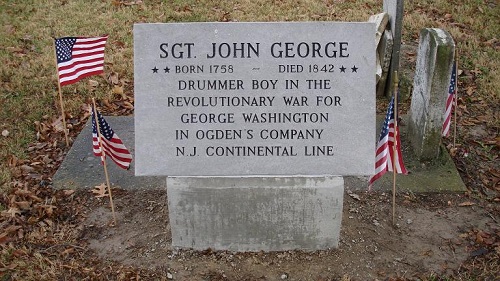
As I’ve been playing a lot of drums lately I thought it would be interesting to stay in that mindset and share the story of John George, a Revolutionary War drummer who served in General George Washington’s Headquarters Guard.
You may recall another posting that I did a few months back that examined the legacy of the drummer boy. As primarily noncombatants, it is rare to have a detailed look at the service of any military musician. George is an exception to that rule as he served the Continental Army’s supreme commander as his personal percussionist. His descendants have also done an exceptional job keeping his legacy alive through public commemorations. Arville L. Funk’s study titled From a Sketchbook of Indiana History, includes a profile of the first “famous” American drummer. It reads:
In a little known grave in south-western Marion County, Indiana, lie the remains of an old soldier traditionally acclaimed as “George Washington’s drummer boy.” This is the grave of Sergeant John George, a Revolutionary War veteran of the First Battalion of the New Jersey Continental Line.
Through extensive and alert research by Chester Swift of Indianapolis into Revolutionary war records, muster rolls, field reports, pension records, etc., there is evidence that Sergeant George might have been the personal drummer boy of Washington’s Headquarters Guard during a large portion of the Revolutionary War.
John George was born in Raritan, New Jersey, on November 11, 1759. On January 1, 1777, at the age of 17, George enlisted as a private in Captain John Flahaven’s company of Col. Matthias Ogden’s First New Jersey Battalion. On September 8th of that year, Private George, who was listed on the company’s rolls as a drummer, fought in his first battle, a short engagement at Clay Creek, which was a prelude to the important Battle of Brandywine. Later, Ogden’s battalion was to participate in the battles of Germantown and Monmouth, serving as a part of the famous Maxwell Brigade.
The Maxwell Brigade served during the entire war under the personal command of General Washington and was considered to be one of the elite units of the American army. According to John George’s service records, he served his first three-year enlistment as a private and a drummer with the brigade at a salary of $7.30 a month. When his three-year enlistment expired, George reenlisted as a sergeant in Captain Aaron Ogden’s company of the First Battalion (Maxwell’s Brigade) for the duration of the war.
The First Battalion wintered with Washington at historic Valley Forge in the snows of 1777-78. It was also present at Yorktown when British General Cornwallis surrendered his command in October of 1781. After the actual fighting ended in the war, Sergeant George continued to serve with the Continental Army until the peace treaty was signed in 1783. Records indicate that he was discharged along with the last of Washington’s Guard at New Windsor, New York, in June of 1783. He and other members of the Guard were decorated with the badge of Military Merit by Washington in recognition of their more than six years of faithful service to his commander.
After his discharge from the army, Sergeant George migrated to Mercer County, Kentucky, to receive his 100 acre veteran’s land grant for his wartime service. His Kentucky farm was near the historic old frontier settlement of Harrodsburg. The old veteran farmed his land grant for over fifty years. While farming in Mercer County, George married and raised a large family. In 1821, George applied for and received a Revolutionary War pension for his military service almost forty years previous. He first received nine dollars a month, but his pension records indicates that this was later increased to twelve dollars because he had been a non-commissioned officer.
At the death of his wife in Mercer County, George migrated to Perry Township in Marion County, Indiana, to reside with his daughter and her husband. This was in June of 1838, and the old drummer was now about eighty years of age. His daughter had married Peter Stuck and their residence was just east of where the campus of Indiana Central College is now located.
The old soldier lived with the Stucks until his death on November 28, 1847. He was buried in an early Perry Township cemetery, Round Hill Cemetery, now at the intersection of Epler Road and South Meridian Street. His grave is just a few yards from the main entrance of the cemetery and is marked with the usual simple government stone.
Down through the years, the older residents of Perry Township have maintained that Sergeant George was definitely a drummer boy of Washington’s Guard and many claimed to have seen a certificate signed by Washington personally, confirming George’s assignment as a drummer with the Guard. The certificate has been lost for many years, but the research of Revolutionary War records indicates that John George could have been the Guard’s drummer for more than half of the war.
The Great old soldier’s great-great grandson, Colonel Walter H. Unversaw now lives in Kokomo, and is chairman of a memorial fund that is raising money to erect a suitable monument at the grave of Sergeant John George. The monument will be a life size figure of a Revolutionary war drummer boy, honoring the “Legendary” drummer boy of George Washington, now buried in a almost forgotten grave in Indiana.
Now back to practicing...

Connecting with the past
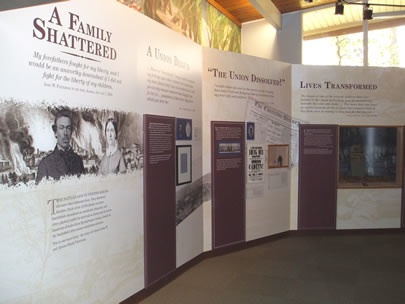
This past weekend I took a short drive out to the Chancellorsville Battlefield Visitors Center to acknowledge the 149th anniversary of the Battle of Chancellorsville (May 1-3, 1863). In addition to running an excellent film on the engagement (written by our friend John Hennessy), the CBVC museum also features some wonderful artifacts, dioramas and exhibits.
This week also marks the 148th anniversary of the Battle of the Wilderness (May 5-7, 1864). As The Wilderness Battlefield does not have its own Visitors Center, the CBVC also doubles for it.
One of the new installations (also written by John and our film-friend Donald Pfanz) tells an exceptionally tragic story from the Wilderness. The central character, John Williams Patterson, was a colonel of the 102nd Pennsylvania Volunteer Infantry who was killed May 5, 1864. According to the exhibit Patterson died the day after returning to camp from leave, and one day before his 29th birthday. He was shot as he led the regiment against attacking Confederates at the intersection of the Brock and Orange Plank roads. His body was left on the field as the regiment fell back, but was retrieved the next day.
Patterson was first buried at the 6th Corps field hospital. In 1865 his body was moved to Wilderness Cemetery No. 2, near where he received his fatal wound. In 1869, when the cemetery was emptied for transfer of the bodies to Fredericksburg, Patterson’s was taken north to Pennsylvania and reburied in the Southside Cemetery. (The preserved grave marker that is on display had also arrived in Pittsburgh with the body. The board reads, in black ink, “Col. Jno. W. Patterson, 102 Pa., Killed May 1864.”)
The exhibit is titled “A Family Shattered” and features photographs, letters and other items preserved by Patterson’s descendants. These include an 1861 recruiting poster; two flasks; a bullet that apparently passed through Patterson’s chest at the Battle of Fair Oaks and a poster from the Orphan’s Court, advertising the sale of the Patterson home when his death left his wife and children destitute.
The loss of Col. Patterson financially devastated his family, leaving them in near-poverty. His wife, Almira, had a widow’s pension of about $360 per year. Although Patterson had owned his house free and clear, the Allegheny County, Pa., Orphans’ Court compelled Almira to sell it in March 1865 to provide funds to support her and her three young children.
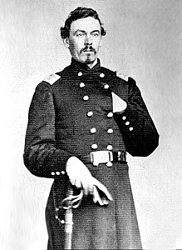 William A. Phillis III, a descendant of John Williams Patterson wrote an excellent study of his great-great grandfather that was published in the Wilderness Dispatch Vol. 8 No. 2 Summer 2003. In it he writes:
William A. Phillis III, a descendant of John Williams Patterson wrote an excellent study of his great-great grandfather that was published in the Wilderness Dispatch Vol. 8 No. 2 Summer 2003. In it he writes:
Colonel John Williams Patterson of the 102nd Pennsylvania Infantry (Wheaton’s Brigade, Getty’s Division of the VI Corps) was killed at the corner of Brock Road and Orange Plank Road on May 5th, 1864. Col. William H. Moody of the 139th Pennsylvania wrote of Col. Patterson’s death, "Col. John W. Patterson, of Pittsburgh, commanding the 102d, was shot dead on that day. Poor Patterson! I shook hands and spoke with him just before the advance was ordered, and a moment afterwards he received a bullet through the brains. May Heaven console his stricken widow and children. "‘After life’s fitful fever he sleeps well"‘.
Col. Patterson’s death was a disaster for his family. Almira Wendt Patterson, the widow of the colonel, was orphaned at age 12, widowed at 29 and her youngest child, Mary Richards Patterson, died of scarlet fever at the age of 6. Almira and John’s children, Fred Wendt Patterson (b. 1860) and Agnes Wendt Patterson (b. 1861) were made wards of the Orphans Court in Pittsburgh and the widow’s house and belongings were sold by the court. The widow lived on a Widow’s Pension until she died in 1908 and was buried in New Brighton, Pennsylvania in a grave marked "Almira Patterson, Wife of Colonel John W. Patterson". (More here)
On a side-note, my Revolutionary War readers may be interested to know that Patterson came from a long line of ancestors who had served the military in the Revolution, War of 1812 and the French and Indian War. (List here)
I am particularly taken with this display, not because there is a tie to my hometown, but due to the fact that this is an example of the kinds of exhibits that we need more of. Far too many museums feature ‘nameless’ photos of soldiers without the detailed story behind them. This exhibit allows the visitor to directly connect with the man in the image, as well as his family. We not only see what his experiences were in the war, but also the repercussions of his death on the home front and how it affected his wife and children. It magnifies the tragedy of the Civil War and gives us much to ponder during the Sesquicentennial.
I highly recommend making a visit to the Chancellorsville Battlefield Visitors Center to see this unique and touching exhibit. The Pattersons' story is one that was repeated thousands of times over the course of the Civil War. This is the history that we should labor to preserve and present. I also recommend visiting the FSNMPS blog Mysteries and Conundrums for more stories like that of John Williams Patterson.
Photos: National Park Service
It's here!
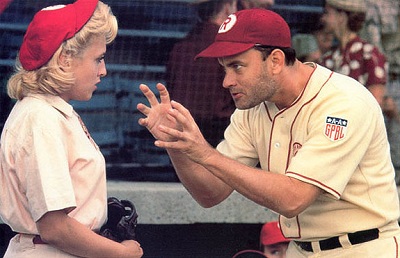
You Stink! proves there is crying in baseball.
It’s been several years since I’ve had the opportunity to announce the arrival of a new book. Therefore it is with a great sense of pride (and gratitude) that I can finally say that You Stink! Major League Baseball’s Terrible Teams and Pathetic Players is now available!
This particular title is extra-special to me for a few reasons. First, I got to co-write it with my friend Eric Wittenberg, an exceptional historian who I have always had the greatest respect for (see his announcement post here). Second, this book took a REALLY long time to come to fruition. In fact, it’s been 38 years since Eric first dreamed up the concept and well over 4 years since we initially penned the first draft. Third, we got the coolest mascot in the history of the game to write our Foreword: Dave Raymond, the original Phillie Phanatic.
Although the finished product has exceeded all of our expectations, there was a time when we weren’t sure if the book would ever see the light of day. Our original manuscript (6 chapters longer) was turned down by multiple publishers who all loved the idea, but also felt that sports books were too much of a gamble in today’s fickle book market. Thankfully, The Kent State University Press folks believed in our vision and helped us to streamline the final draft. Looking back, I’m glad we took the long way around as we could not have asked for a better publisher.
This book, like all books, represents the work of many folks. Peer-reviewers, editors, proofreaders, designers and publicists all contribute to the final product and we were very blessed to have KSUP’s all-star team working with us. We also had the assistance and support of some excellent organizations like Baseball-Almanac, the National Baseball Hall of Fame and the Associated Press, who patiently assisted us as we researched the statistics, photographs and illustrations that complement our narrative. (The final count is 350 pages w/ 54 photographs and 50 stats tables). Of course our families also deserve a thank you as this casual “side-project” ultimately became an obsession for Eric and me. In fact, I would say that we probably spent more time tweaking this manuscript than any other. My father deserves a special shout out as he proofread this monster...twice. Thanks dad!
Now that the finished book has reached the shelves, our work begins again. No doubt we’ll be doing lots of press, speaking engagements, and signings on this one. Some special events and appearances are already in the works and don’t be surprised if you see or hear us on some of your favorite sports talk shows. This book is special and I am very thankful to have been a part of it. Needless to say my blogging attentions will be primarily focused on this release in the near-term, so be sure to follow us over on the official You Stink! blog and Facebook page. I will likely be posting more frequently over there.
You can order the book from multiple places online including direct from the publisher, or at Amazon and Barnes and Noble. It will also be on the shelves in most traditional bookstores and we are hoping to get it in the gift shops of some baseball venues and museums. Stay tuned for more announcements and be sure to buy a copy! Thanks.
Hamilton essay published in The G&LR
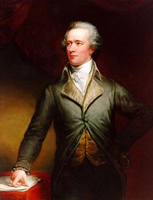 An excerpted version of my essay on the speculation surrounding Alexander Hamilton’s sexuality is appearing in the May-June issue of The Gay and Lesbian Review/Worldwide. Titled “Alexander Hamilton’s Smoking Gun,” this 3-page feature presents Hamilton’s rumored homosexuality and includes several curious letters written by Hamilton to his friend and confidant John Laurens.
An excerpted version of my essay on the speculation surrounding Alexander Hamilton’s sexuality is appearing in the May-June issue of The Gay and Lesbian Review/Worldwide. Titled “Alexander Hamilton’s Smoking Gun,” this 3-page feature presents Hamilton’s rumored homosexuality and includes several curious letters written by Hamilton to his friend and confidant John Laurens.
This is my first piece to be published in The (G&LR), which is a highly respected historical journal. The Mission of the publication is to “...provide a forum for enlightened discussion of issues and ideas.” As this is not one of the usual publications that I write for, I am excited about the opportunity to reach a whole new audience with my study into the lives and legacies of the Founding Fathers and I would like to thank Richard Schneider, Jr., Ph.D. who is the editor and chief of the publication for peer reviewing and selecting my essay for publication.
You can view a hi-res PDF of the printed article here. For related topics on history, politics and culture, visit The (G&LR) website.

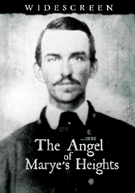
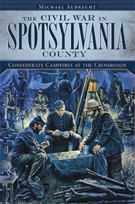
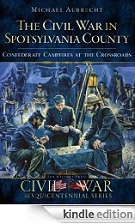

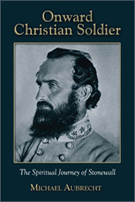




 William A. Phillis III, a descendant of John Williams Patterson wrote an excellent study of his great-great grandfather that was published in the Wilderness Dispatch Vol. 8 No. 2 Summer 2003. In it he writes:
William A. Phillis III, a descendant of John Williams Patterson wrote an excellent study of his great-great grandfather that was published in the Wilderness Dispatch Vol. 8 No. 2 Summer 2003. In it he writes:
 An excerpted version of my essay on the speculation surrounding Alexander Hamilton’s sexuality is appearing in the May-June issue of The Gay and Lesbian Review/Worldwide. Titled “Alexander Hamilton’s Smoking Gun,” this 3-page feature presents Hamilton’s rumored homosexuality and includes several curious letters written by Hamilton to his friend and confidant John Laurens.
An excerpted version of my essay on the speculation surrounding Alexander Hamilton’s sexuality is appearing in the May-June issue of The Gay and Lesbian Review/Worldwide. Titled “Alexander Hamilton’s Smoking Gun,” this 3-page feature presents Hamilton’s rumored homosexuality and includes several curious letters written by Hamilton to his friend and confidant John Laurens.